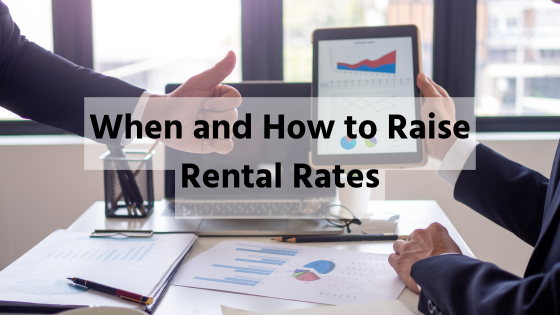When and How to Raise Rental Rates

As a landlord, rising operational costs are something you’re likely to encounter over the years. To maintain consistent returns amidst inflation, increasing rental rates becomes the next logical step.
However, you may hesitate to adjust prices to avoid turnover, especially with long-term residents. Keep reading to learn more!
You must ask yourself the following before setting the rental rate higher:
- What is the current market value of the rentals in your area?
- What is the rate of vacancy?
- Are your renters willing to pay the new rate?
It is necessary to assess if tenants can meet the new rental price because the price hike could lead to renters not renewing their leases.
Here is a good process to follow when increasing your rental rates:
Understand Local Rental Regulations
Research the current state and local regulations since differences can occur. In some areas, limits may be applied for rental price hikes. Long-distance landlords must always keep up with the latest rental laws to ensure compliance.
In some cities, landlords may be required to adhere to price increase caps, so you may be unable to increase prices to your desired rate. It is recommended to remain updated with state and local laws before setting a rate increase.

Include Potential Rent Increases in the Lease
If your state and local area do not restrict a rental rate hike, residents can expect a potential rental fee adjustment.
If this is the case, you must inform the renters first by putting this expected rent increase in black and white. Renters should be aware of possible annual rental fee increases in your lease agreement.
When you let the renters know beforehand about possible rental hikes, they can plan. It is always best to offer full details, such as the estimated rent fee increase and the total rental amount.
Make it a point to leave tenants with enough time to make up their minds whether to renew the lease or not.
A period of 40 to 90 days notice period should be plenty of time for deliberation so you can prepare for marketing activities in case the renter does not want to renew the contract. It is preferable to have a long notice period.
Assess Your Rental Rate Increase
An effective way to make an accurate rate increase is by checking the property value in your area.
Compare similar rentals of competitors and see the rental amount they are charging. If you fail to do this, you might end up charging an excess amount or undercharging.

Check a similar property structure with the same amenities as yours that renters can’t resist. If you charge $2,000 monthly and see that another landlord is charging $2,500, it is discouraged to charge more than this.
Otherwise, prospective renters would choose the rental of your competitor. If you are pricing way above the market value, you can expect your renters to move to other rental properties.
You also need to check the vacancy rate because similar properties may be unoccupied for a far longer time.
Would the issue be in terms of drawing residents through marketing effectively or is it that the rental demand is low in that particular neighborhood? This is a factor to consider before a rate hike.
If you straight away increase the rental to match the properties in your area, this can be a wrong move. Remember that some long-term renters may be price-sensitive and may react to the price jump. It is better to raise rental rates little by little to ensure that renters would continue their loyalty.
Acceptable rental adjustments can range between 3% to 5% but again, it will still depend on current circumstances, level of competition, market demand, and local rent laws.
Upgrade and Maintain Your Rental
Planning rental renovations is a good strategy to continue creating value for your renters. This way, the rate increases are justifiable. If there are additional amenities and improved housing systems, then renters may be more than willing to pay the rental rate hike.

However, raising the rent when your rental unit is not well-maintained or maintenance requests are dismissed can make renters feel frustrated. They can end up not renewing knowing that the property is in dire need of property maintenance.
It is best to pay attention to the needs of your renters and create a comfortable residential space. Invest in newer appliance models to save on utility bills and seek feedback from your renters, so you can keep updating the unit to serve their needs. This way, they will be more than willing to renew their leases when the tenancy expires.
Notify Renters of the Updated Rental Rate
Ensure that you notify your renters in advance about the new rental rate. An acceptable period is 40 to 60 days in advance of the lease expiry when setting a new rate.
Allocate a long period since you may need to fulfill specific requests from your tenants to inspire them to sign up for a new leasing agreement with you.
Some renters may request you to update the appliances or furnishings. They can also ask you to repaint the interiors before they sign another leasing term.
Evaluate and compromise to preserve a good relationship while making sure you can earn back good returns from your rental property investment.
When both parties agree on the rental increase and new rate, it is necessary to affix signatures and date a “rent increase notice”. Keep this for proper documentation.
Bottom Line
This process can make the rental rate adjustment smooth. Renters will want to learn rental hikes ahead of time, so make sure to avoid springing the news to limit sudden tenant turnovers. The goal is always to keep renters for the long term.
If you wish to partner with a trusted Chico property management company, contact IPM Property Management today!
